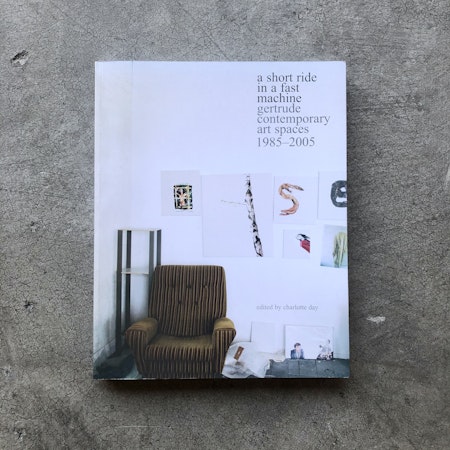PATTERNS PERVADE our everyday lives as we seek to order our environment. Plans and rhythms are established. Precedents or typical instances give direction and meaning to our subconscious decisions. The patterns of occurence find their physical counterpart in the rhythms and patterns of nature and music, not to mention the surfeit of decorative and ornamental designs that permeates our constructed surroundings.
Pervading senses of pattern extend from within the individual outwards into society, and become increasingly complex, captivating the artist and demanding attention and investigation. Philip Faulks' cycle of paintings, FELL IN LOVE, engages one specific aspect of this investigation.
FELL IN LOVE, a narrative series of paintings replete with patterning and decoration, attempts to document emotional entanglements in personal relationships through a formal language of conventionalised and decoratively inspired forms. By using an ornamentalist manner with which to approach boldly such familiar artistic subjects, Philip Faulks is deliberately confronting and breaking with the more familiar expressionistic and realistic traditions of representation.
The use of symmetry, repetition and dazzling colour, together with appropriation of Western and Eastern ornamental traditions results in a series of images that assert the validity and strength of new decorativeness. For some time, artists have employed lotions of pattern and ornamentation in a sparing and hesitant manner, for fear of being criticised as "frivolous" or "decorative" yet in these works these notions are celebrated. This approach helps to restore the much maligned profile of such expressive modes to an appropriate historical position in the visual arts.
Contiguous with the equivocal nature of the notion of the pattern, Philip Faulks establishes a sense of ambiguity in meaning. The asexuality of the incorporeal figures comments on this ambiguity, yet it is brought into sharper focus when the narrative and evocative titles of the works are matched against the moderate and flat ornamental treatment of the canvas.
By engaging the imprecise notion of pattern (which can relate both to rhythms and precedents in everyday life as well as to decorative designs), Philip Faulks resolves partially the apparent ambiguity between form and content, yet leaves any definitive resolution with the viewer.
The artist's intense interest the ambiguity of personal relationships and the imprecise notion of patterns in society provide the conceptual tools for the representation of these complex concerns.
Cry, Cry, Cry, (Cat. no. 5) and Guilty (Cat. no. 6) are exemplary visual equivalents of the concept of extending complex patterns. Repetitive patterning seems to manifest itself organically within the anthropoidal figures, envelopes them and then radiates beyond the frame.
Lived Together (Cat. no. 3) and Please Don't Leave Me (Cat. no. 4) tend to focus on the more ambiguous and problematic issues involved in personal relationships. While the cycle of paintings address iconographically the notion of hope and loss in love, the formal treatment of the surfaces celebrates human kind's predilection to ornament and decorate.
